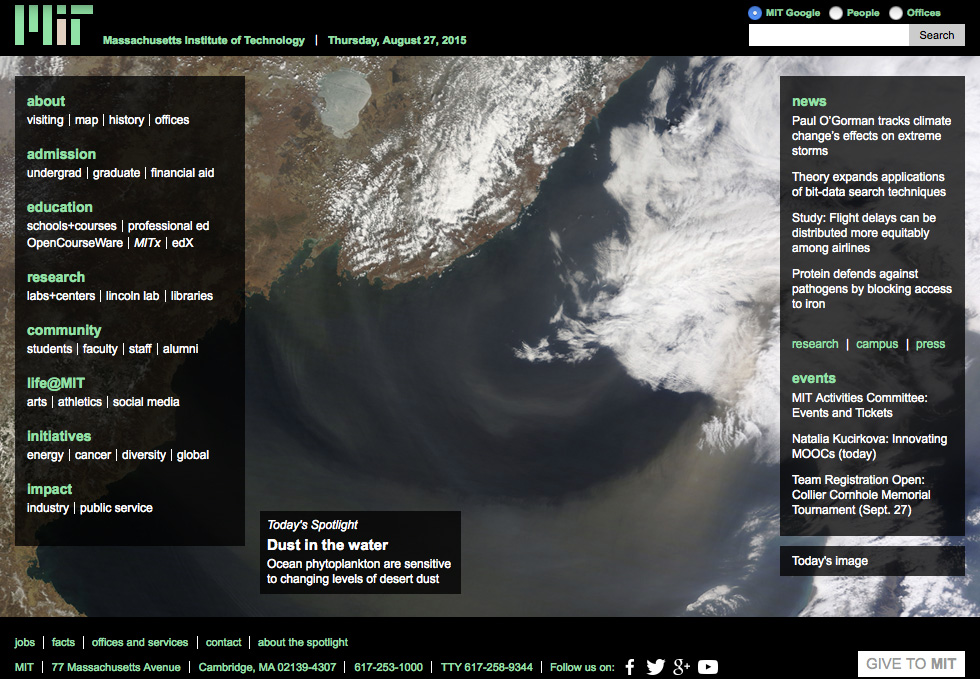Today’s Spotlight is a satellite image, from NASA, that shows a dust storm blowing over the Sea of Japan on its way out to the North Pacific.
Each spring, powerful dust storms in the deserts of Mongolia and northern China send thick clouds of particles into the atmosphere. Eastward winds sweep these particles as far as the Pacific, where dust ultimately settles in the open ocean. This desert dust contains, among other minerals, iron — an essential nutrient for hundreds of species of phytoplankton that make up the ocean’s food base.
Now scientists at MIT, Columbia University, and Florida State University have determined that once iron is deposited in the ocean, it has a very short residence time, spending only six months in surface waters before sinking into the deep ocean. This high turnover of iron signals that large seasonal changes in desert dust may have dramatic effects on surface phytoplankton that depend on iron.
Read full article.
Each spring, powerful dust storms in the deserts of Mongolia and northern China send thick clouds of particles into the atmosphere. Eastward winds sweep these particles as far as the Pacific, where dust ultimately settles in the open ocean. This desert dust contains, among other minerals, iron — an essential nutrient for hundreds of species of phytoplankton that make up the ocean’s food base.
Now scientists at MIT, Columbia University, and Florida State University have determined that once iron is deposited in the ocean, it has a very short residence time, spending only six months in surface waters before sinking into the deep ocean. This high turnover of iron signals that large seasonal changes in desert dust may have dramatic effects on surface phytoplankton that depend on iron.
Read full article.




